On the eastern side of the plateau there is a gigantic cemetery, centuries old, where monuments for half a million people sit beneath towering 700-year-old trees.
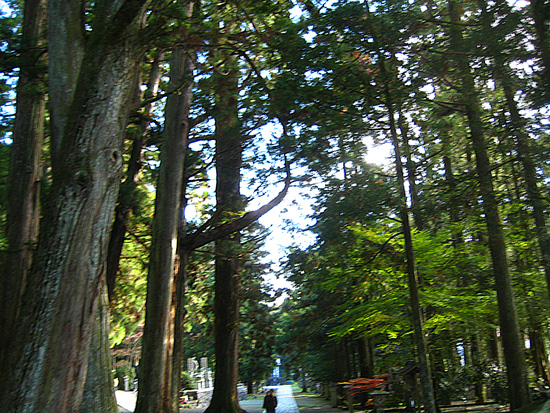
Even today people pay to have monuments erected here. Sometimes these contain the actual ashes of the deceased. More often the dead are interred in their home towns, while a monument is erected in holy Koya-san to promote their spiritual wellbeing.

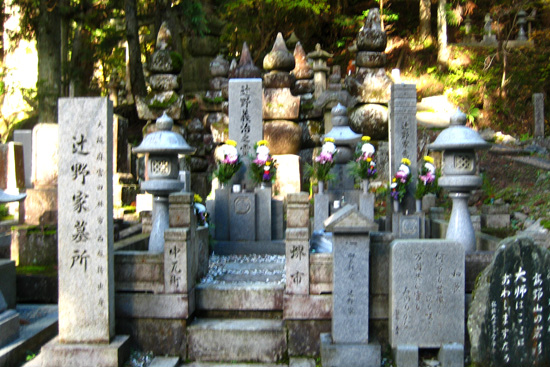
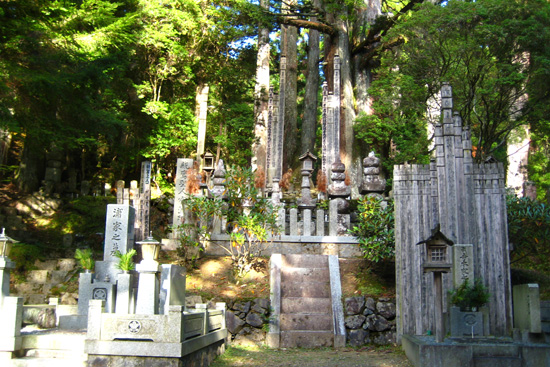
The cemetery has many statues of Kobodaishi, the founder of Shingon Buddhism.
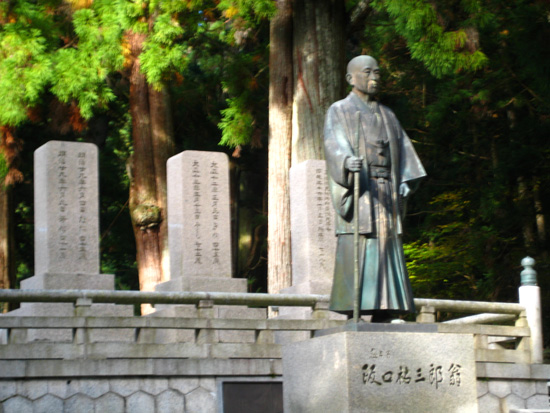
This monument was erected by an aircraft manufacturer. I’m not entirely sure from the explanation whether it is to honor dead test pilots or kamikaze pilots.
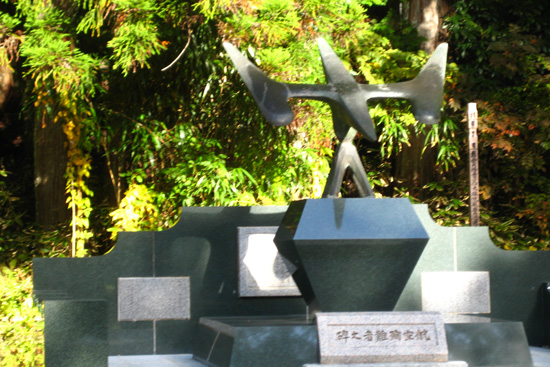
A monument depicting the Guardians of The Gates of the Six Worlds.
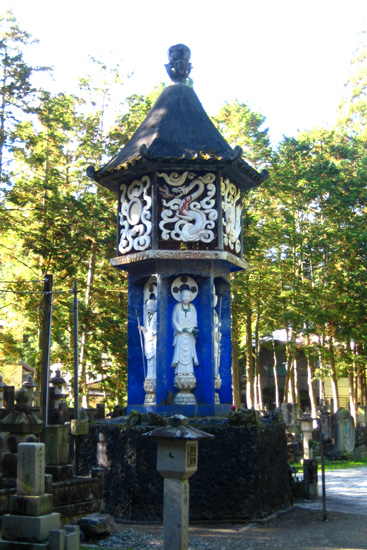
Small statues of the Jizo Buddha are found all over Japan, often wrapped with a red or white bib. This is an especially compassionate Buddha who protects the weak, particularly children, pregnant women and travelers.
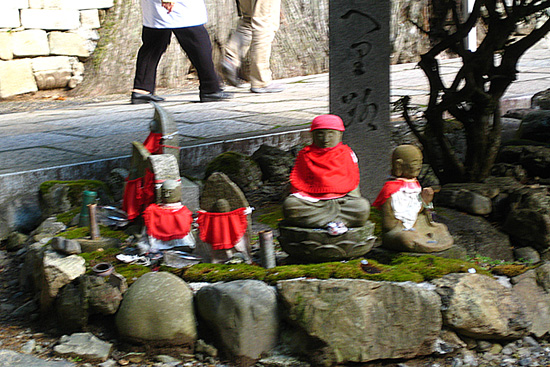
In ancient times it was thought that children who died could not go to Heaven because they had caused great sorrow for their parents. Therefore grieving parents would wrap articles of their children’s clothing around Jizo statues and ask the Jizo to find their children and guide them to Heaven. Over the years this evolved into a tradition of wrapping a red bib around the Jizo when asking for any sort of favor.
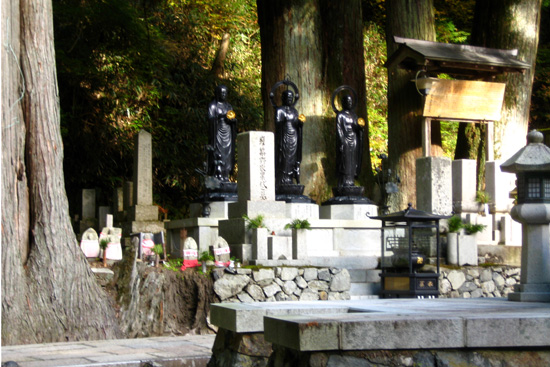
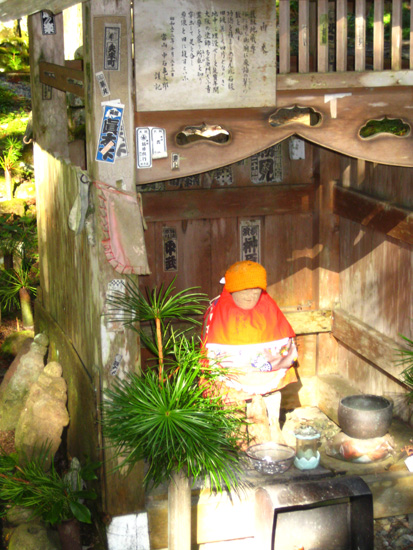
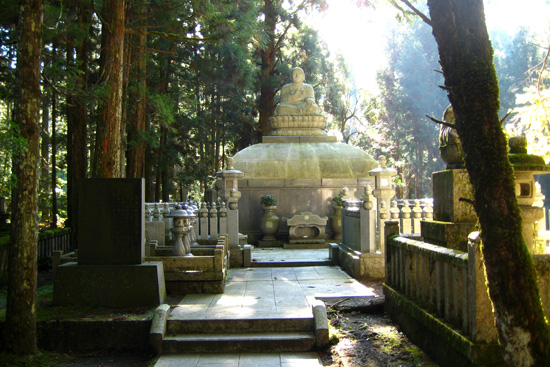
The Angry Buddha. Note the sword and rope.

In 1582 Nobunaga Oda had almost succeeded in unifying Japan under his rule, and thus bringing an end to the Warring States Period. However before he could complete this task he was killed by his vassal Mitsuhide Akechi. Because of this act of treachery Akechi has never been able to rest in peace, which is why his monument is cracked.
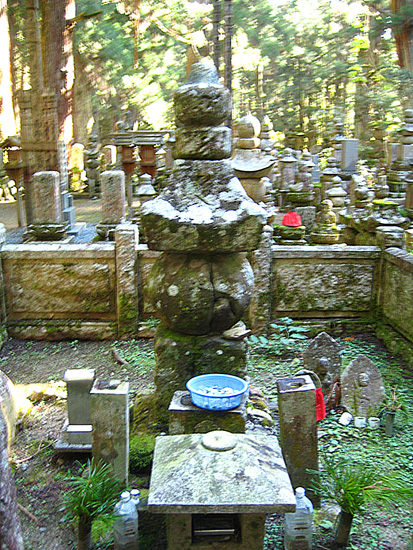
However note the offerings. Akechi is popular here because Nobunaga Oda persecuted Buddhists and was preparing to attack Koya-san when he was killed.
The largest monument in the cemetery: a 7 meter representation of a 5-story Buddhist pagoda in granite. For the wife of a Tokugawa Era general.
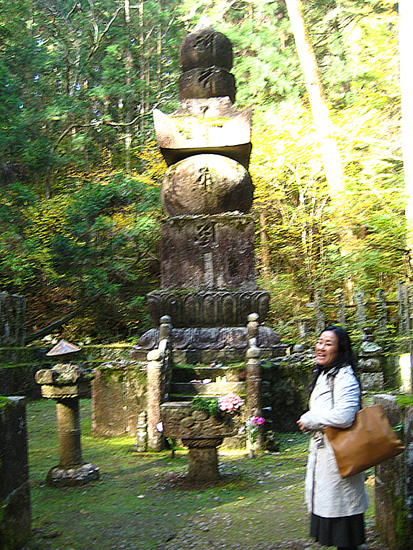
Small pagodas and Jizos left by ordinary people who couldn’t afford monuments. The Donald Duck doll is disturbing. Was it dropped by a child, or left by grieving parents?
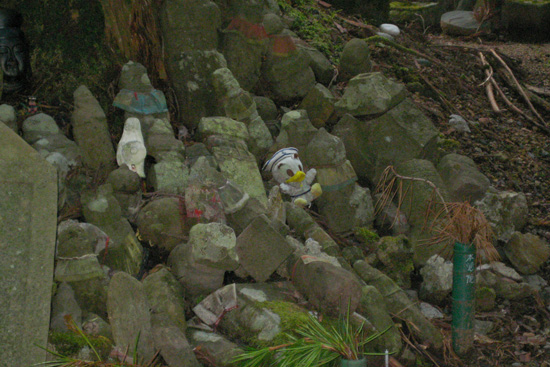
This monument was erected by the trade association of puffer fish chefs, for the benefit of the souls of all the fish they have killed.

Pilgrims with traditional staffs and hats walk here along a 24 kilometer path from Jisonin Temple on Kudoyama.
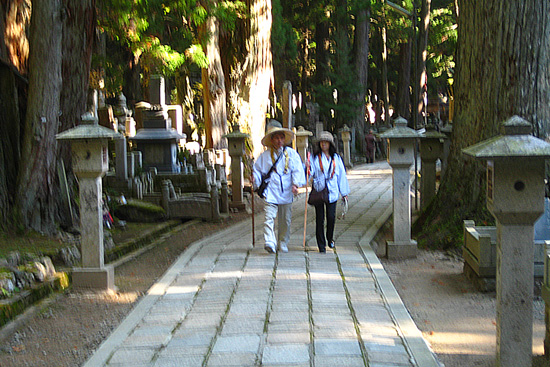
There is a lot more to the cemetery, but this is about all that I can fit in one post…
(Warning: These stories are based on what our local guide told us. They may not always correspond to scholarly opinion.)

